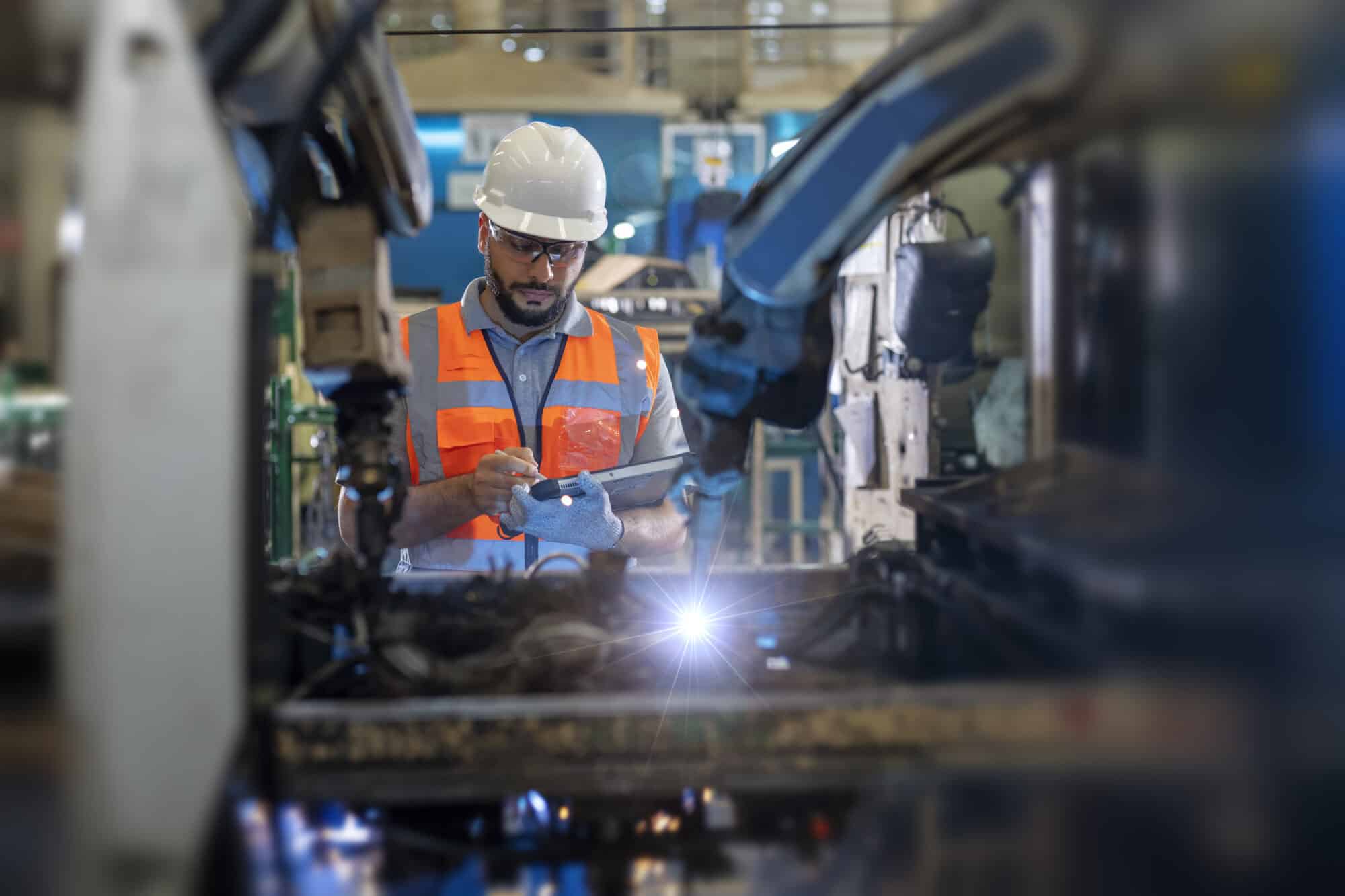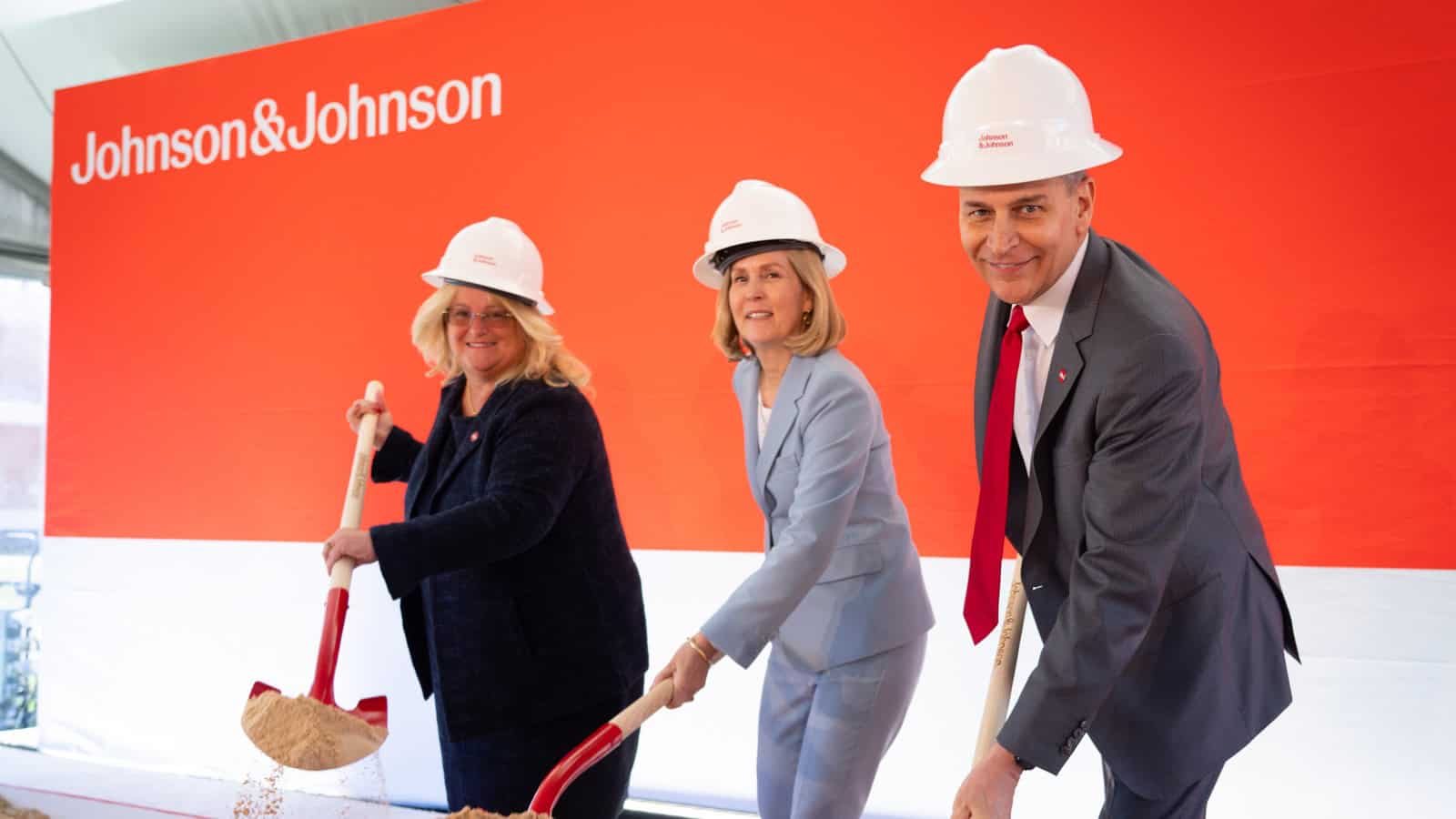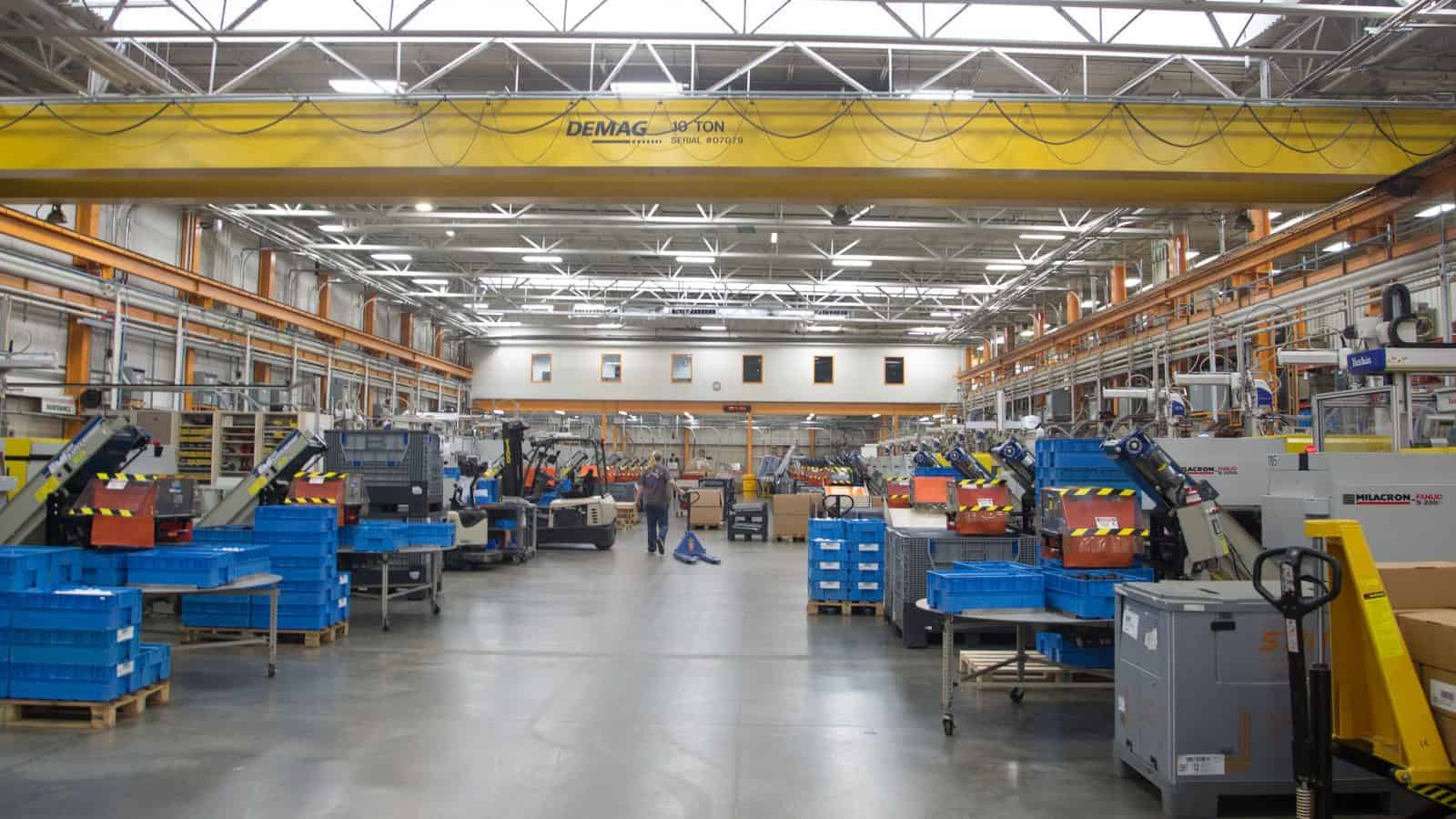NAM: SEC Must Make Changes to Cybersecurity Disclosure Rule

The Securities and Exchange Commission should rescind certain reporting requirements for cybersecurity incidents in its 2023 final cybersecurity rule, the NAM told the agency.
What’s going on: The NAM supports a rulemaking petition recently submitted by five financial industry groups that asks the SEC to “rescind the Form 8-K (Item 1.05) incident reporting requirements for cybersecurity incidents, as well as the corresponding Form 6-K requirements for foreign private issuers.”
The SEC should also do the following, according to the NAM:
- Rescind the four-day reporting requirement: The NAM asks the agency to stop mandating that public companies report on cybersecurity incidents within four business days. Instead of this rigid deadline, the NAM supports a return to a voluntary principles-based disclosure regime, whereby companies have more flexibility to disclose significant cybersecurity attacks to provide timely and useful information for shareholders.
- Allow more flexibility for companies to delay disclosures that could jeopardize national security or law enforcement investigations. The NAM asks the SEC to broaden a narrow exception that requires companies to obtain permission from the U.S. attorney general within four business days to delay public disclosure, an impractical requirement for most manufacturers.
Why the SEC should do it: The current four-business day reporting mandate provides manufacturers “with insufficient flexibility to delay or forgo disclosure to investigate and respond to an incident, work with law enforcement or avoid tipping off attackers,” NAM Managing Vice President of Policy Charles Crain explained.
- The mandatory disclosure deadline has “increase[d] costs and complexity for businesses” and has the potential to “mislead investors and ultimately create significant risks for shareholders and the broader economy that would eclipse the potential benefits of reporting.”
- The SEC’s incident reporting mandate also harms shareholders by diverting company resources from efforts to address the impact of a cybersecurity attack.
- Finally, requiring that companies issue public reports while a cybersecurity incident is ongoing could provide information helpful to the perpetrators or other bad actors.
The last word: “The NAM strongly supports a more flexible approach to cybersecurity reporting, and manufacturers respectfully encourage the SEC to amend its 2023 cybersecurity rule to more appropriately reflect the important concerns of public companies, shareholders, law enforcement and national security agencies,” Crain said.
Manufacturers Asked and EPA Delivered: Repeal of Unworkable Power Plant Rule a Victory for Grid Reliability, Protecting America’s Energy Future
Washington, D.C. – In response to the EPA’s decision to repeal the 2024 power plant rule, a key priority for the National Association of Manufacturers’ ongoing efforts to rebalance federal regulations and unleash American energy, NAM President and CEO Jay Timmons issued the following statement:
“The EPA’s decision to repeal the unworkable power plant rule for existing coal-fired and new natural gas-fired power plants is a critical and welcome step toward rebalanced regulations and American energy dominance. This change will strengthen grid reliability and support manufacturing growth in the United States.
“From the onset, the NAM has warned that this rule would undermine the stability of our electric grid and impose unworkable mandates on critical energy infrastructure. The rule’s unrealistic timeline for power plants to adopt certain emerging technologies to commercial scale made it infeasible—undermining America’s energy security and hampering America’s leadership in next generation technologies like AI. Existing natural gas plants are critical to powering manufacturing in the United States—providing affordable, reliable baseload energy to continuously support industry. By layering new regulations on an already overburdened electric grid, the rule was putting our energy security at risk. Repealing this unbalanced rule will enhance manufacturers’ access to America’s abundant energy resources and ensure that the industry has the power it needs to drive the American economy.”
Background: Today’s action builds on the momentum from a December 2024 NAM-led letter to the transition team, signed by more than 100 manufacturing organizations, detailing regulatory actions the incoming administration could take to right-size regulations that stunted manufacturing growth and job creation—including the power plant rule. It also implements one of the key recommendations from the letter the NAM sent to 10 federal agencies in April, including the EPA, identifying the power plant rule as one of the most burdensome regulations facing manufacturers and urging a rebalanced approach to strengthen, rather than strain, U.S. manufacturing. Last year, the NAM endorsed Rep. Balderson’s (OH-12) Congressional Review Act resolution that would have blocked implementation of this rule.
-NAM-
The National Association of Manufacturers is the largest manufacturing association in the United States, representing small and large manufacturers in every industrial sector and in all 50 states. Manufacturing employs nearly 13 million men and women, contributes $2.93 trillion to the U.S. economy annually and accounts for 53% of private-sector research and development. The NAM is the powerful voice of the manufacturing community and the leading advocate for a policy agenda that helps manufacturers compete in the global economy and create jobs across the United States. For more information about the NAM or to follow us on Twitter and Facebook, please visit www.nam.org.
Manufacturers Warn: PFAS Standards Threaten Industry and National Security
Washington, D.C. – Following the Environmental Protection Agency’s announcement on per- and polyfluoroalkyl substances in drinking water, National Association of Manufacturers President and CEO Jay Timmons issued the following response:
“We’re encouraged that the EPA has listened to the voices of manufacturers and extended the compliance deadline for unworkable national primary drinking water standards for PFOA and PFOS and committed to reconsidering the blatantly unlawful regulatory determinations for several other PFAS compounds.
“If the U.S. wants to stay a global manufacturing leader, we need practical, commonsense PFAS regulations. Manufacturers support science-based regulations that protect health and the environment and are in line with the Safe Drinking Water Act requirements. However, the Biden-era standards for PFOA and PFOS are deeply flawed, the costs they impose exceed any demonstrable benefit and the industries they harm include those vital to our national interests, including semiconductors, telecommunications and defense systems. The Pentagon has even raised alarms about long-term risks, including supply chain disruptions, that these standards would create.
“In addition to conflicting with manufacturers’ best interests, these standards also go against the Trump administration’s goal to make the U.S. the best place to build, grow and create jobs—a goal the administration is advancing by rebalancing regulations. The administration has done remarkable work to advance that goal, but today’s decision moves in the opposite direction.
“The decision runs counter to past efforts to cut red tape and boost manufacturing by putting shovels in the ground, more people to work, more products on the shelves and more prosperity into our communities. We don’t have to choose between supporting manufacturing and clean water in our communities.”
-NAM-
The National Association of Manufacturers is the largest manufacturing association in the United States, representing small and large manufacturers in every industrial sector and in all 50 states. Manufacturing employs nearly 13 million men and women, contributes $2.94 trillion to the U.S. economy annually and accounts for 53% of private-sector research and development. The NAM is the powerful voice of the manufacturing community and the leading advocate for a policy agenda that helps manufacturers compete in the global economy and create jobs across the United States. For more information about the NAM or to follow us on Twitter and Facebook, please visit www.nam.org.
It’s Infrastructure Week!

During United for Infrastructure’s Infrastructure Week, the NAM—an active member of the steering committee—participated in several events in Washington, D.C., highlighting the urgent need for permitting reform to accelerate U.S. building projects.
A reception: The NAM hosted a reception to kick off Infrastructure Week 2025 at its headquarters in partnership with United for Infrastructure, with special guest Sen. Shelley Moore Capito (R-WV), chair of the Senate Committee on Environment and Public Works.
- Nucor, Fluor Corporation and CRH sponsored the event.
A panel: NAM Vice President of Domestic Policy Chris Phalen spoke at the United for Infrastructure signature event, underlining the need for commonsense trade and permitting policies.
- “I think we can work with governments to address supply chain challenges,” he said when asked about tariffs. “We have a really important window of opportunity over the next 50 odd days to get some deals that provide zero tariffs on industrial trade. That is what manufacturers support.”
- “Manufacturers rely on transportation networks … to get our goods to and from ports to customers,” Phalen said regarding infrastructure, “but we also are making everything that goes into making transportation work, from aluminum to steel, from asphalt to aggregates, copper, circuitry and the large industrial machinery that builds [and] maintains roads, bridges, factories [and] power plants. So, it’s kind of a virtuous cycle where we’re investing in infrastructure.”
“Comprehensive manufacturing strategy”: Phalen also gave a brief overview of the NAM’s “comprehensive manufacturing strategy.”
- Revising the regulatory framework is a key priority, he said. “We’ve submitted dozens of letters to 10 separate federal agencies as part of President Trump’s deregulatory agenda. Manufacturers every year are spending $350 billion just to comply with federal regulations. And so we’ve been really pleased to see the start of this regulatory rebalancing from the administration.”
- Phalen cited moves including “reopening LNG export facility applications, rebalancing Clean Air Act rules … and streamlining and improving the process to improve new chemicals … at the EPA.”
- “Probably most important is permitting reform,” he added. “Manufacturers operate and employ and invest in the communities where we’re producing, so we don’t want to see any short-circuiting of public input. … [T]here does have to be recognition, though, that the way that things were set up in the late ’60s and early ’70s is hindering infrastructure of all kinds right now.”
A roundtable: The NAM also participated in a roundtable on continuing federal support for water infrastructure investments. NAM Director of Transportation, Infrastructure and Labor Policy Max Hyman shared perspectives on how these investments benefit manufacturers by driving demand for their products and providing an essential service for operations.
The last word: As NAM President and CEO Jay Timmons said during the reception, “Infrastructure is the foundation of manufacturing in the U.S.”
Send Your In-House Counsel to the Manufacturing Legal Summit!

Amid deep uncertainty about the legal and regulatory environment, attorneys in the manufacturing industry have an opportunity they won’t want to miss. The NAM Legal Center’s Manufacturing Legal Summit, scheduled for Nov. 12–14 in Washington, D.C., has opened registration this week.
The only conference crafted exclusively for manufacturing lawyers, the Summit attracts legal talent from companies of all sizes and sectors. Attendees learn about hot-button legal issues facing the industry, discuss best practices and make fruitful professional connections.
If you have in-house counsel who would benefit from this must-attend event, here’s what you need to know.
The details: This year, the fourth annual Manufacturing Legal Summit will focus heavily on the changes and trickle-down impacts brought about by the new Trump administration. Longtime NAM partner Foley & Lardner LLP will lead a session titled “Tariffs, Trade and Trump: Managing Supply Chain and Tariff Risks During an International Trade Tornado.” Other session topics include:
- Managing your workforce;
- M&A transactions in the manufacturing sector;
- PFAS and chemicals update;
- Administrative law under President Trump;
- AI, privacy and cyber; and
- Updates on the trial bar’s latest tactics.
The benefit: “What we hear consistently is that the opportunity to connect with others in the industry who are dealing with the same challenges is invaluable,” NAM Vice President and Deputy General Counsel of Litigation Erica Klenicki said following last year’s conference.
- “This was my first NAM Legal Summit, and I could not be more pleased with the topics presented, as well as the networking opportunities,” said Erin Tannock, compliance counsel for Viega LLC, about the 2024 Summit. “The content was relevant and current. I even had a few ‘aha’ moments! This event is worth the time, and I will be attending for years to come.”
Credits, too: An additional benefit of the conference is the potential to earn CLE credits, a professional requirement for attorneys. In 2024, attendees earned six or seven CLE credit hours for 32 different jurisdictions.
The last word: “In a year defined by uncertainty, the opportunity to benchmark with your manufacturing peers and the NAM legal team has never been so critical,” said Klenicki.
NAM: Comprehensive Manufacturing Strategy Will “Ignite” Renaissance

The NAM’s comprehensive manufacturing strategy will be fundamental in “igniting the Industrial Renaissance of the United States,” the NAM told a House committee today ahead of a hearing of the same name.
What’s going on: “Manufacturers call on President Trump and Congress to implement a comprehensive manufacturing strategy that would create predictability and certainty to invest, plan and hire in America,” the NAM told the House Committee on Oversight and Government Reform.
- The purpose of the hearing was to examine how “cheap labor abroad, combined with overregulation and obstacles to permitting in the United States, contributed to the offshoring of American manufacturing and an overreliance on China to fulfill manufacturing needs.” It also emphasized “the importance of bringing manufacturing back to the United States.”
What we’re saying: The NAM has been advocating that the administration adopt a multipoint plan to see the manufacturing sector flourish. Today it urged President Trump and Congress to take the following actions from that strategy as soon as possible:
- Make 2017 tax reform permanent: Make permanent the pro-manufacturing tax measures scheduled to sunset at the end of 2025 and bring back already expired provisions. Failure to do so will put almost 6 million U.S. jobs at risk, according to a recent EY–NAM study.
- Rebalance federal regulations: Manufacturers now spend $350 billion a year to comply with federal regulations. That’s money that could be spent on factory expansions, hiring and/or wage raises, as NAM President and CEO Jay Timmons has pointed out. The NAM also recently urged 10 key federal agencies to revise or rescind dozens of onerous, anachronistic regulations.
- Expedite permitting reform: “America should be the undisputed leader in energy production and innovation, but we will not reach our full potential without permitting reform.” This must include expediting judicial review, accelerating the permitting process, creating enforceable deadlines and more.
- Implement commonsense trade policies: “Building things in America only works if we can sell them around the world,” the NAM told the House members. “That is why manufacturers urge President Trump and Congress to provide greater predictability and a clear runway to allow them to adjust to new trade realities, while also making way for exemptions for critical inputs, enabling reciprocity in manufacturing trade.”
Manufacturers to Federal Agencies: Rebalance Regulations to Strengthen Manufacturing in the U.S.
The NAM Backs President Trump’s Executive Order 14219 with Policy Proposals to Reconsider Dozens of Costly Regulations Stifling Growth and Jobs
Washington, D.C. – In response to the President’s call for industry input on a new era of balanced, sensible and pro-growth regulation, the National Association of Manufacturers submitted recommendations to key federal agencies highlighting dozens of burdensome and outdated regulations that are driving up costs and undermining manufacturing competitiveness.
“Rebalancing regulations is a critical pillar of our comprehensive manufacturing strategy—which also includes making the 2017 tax reforms permanent, expediting permitting reform to unleash American energy, strengthening the manufacturing workforce and implementing commonsense trade policies,” said NAM President and CEO Jay Timmons. “Manufacturers are spending $350 billion each year just to comply with federal regulations—money that could be spent on expanding factories and production lines, hiring new workers or raising wages. The administration is already answering the calls of manufacturers across the country to reconsider and rebalance regulations that are holding manufacturers back. Using these recommendations as a guidepost, manufacturers look forward to continuing to work with the administration to fix rules that cost too much, trap projects in red tape, chill investment, do not make sense and harm the 13 million men and women who make things in the United States.”
The NAM has identified at least 44 regulations across 10 agencies that the Trump administration should consider revising or rescinding under Executive Order 14219, “Ensuring Lawful Governance and Implementing the President’s ‘Department of Government Efficiency’ Deregulatory Initiative.” Today’s action builds on the momentum of a December 2024 letter from the NAM and more than 100 manufacturing organizations to the transition team detailing regulatory actions the incoming administration could take to right-size regulations that stunted manufacturing growth and job creation. The administration has acted decisively on key manufacturing priorities already: lifting the liquefied natural gas export ban on day one, rescinding Securities and Exchange Commission Staff Legal Bulletin 14L in February and announcing in March that it plans to revise the Environmental Protection Agency’s PM2.5 and Power Plants rules.
The NAM’s submissions in response to EO 14219 target burdensome regulations at the following agencies: the EPA, SEC, Department of the Interior, Department of Energy, Department of Labor, Cybersecurity and Infrastructure Security Agency, Department of Health and Human Services, National Institute of Standards and Technology, Federal Trade Commission and Department of the Treasury.
Background:
EO 14219, issued on Feb. 19, directs federal agencies to conduct a top-to-bottom review of existing regulations within their jurisdiction and identify, within 60 days, those that impose significant costs that outweigh their benefits; exceed statutory authority; disproportionately hurt small businesses; or impede innovation, R&D, economic development and more.
-NAM-
The National Association of Manufacturers is the largest manufacturing association in the United States, representing small and large manufacturers in every industrial sector and in all 50 states. Manufacturing employs nearly 13 million men and women, contributes $2.93 trillion to the U.S. economy annually and accounts for 53% of private-sector research and development. The NAM is the powerful voice of the manufacturing community and the leading advocate for a policy agenda that helps manufacturers compete in the global economy and create jobs across the United States. For more information about the NAM or to follow us on Twitter and Facebook, please visit www.nam.org.
Manufacturing Wins: J&J Invests More Than $55 Billion

Johnson & Johnson will spend more than $55 billion on manufacturing, research and technology in the U.S. over the next four years, the biopharmaceutical company announced (Axios). These investments include a long-planned $2 billion state-of-the-art biologics facility in Wilson, North Carolina.
What’s going on: The NAM joined J&J for the groundbreaking of the 500,000-square-foot biologics manufacturing plant in Wilson on Friday.
- The White House praised the announcement and J&J’s commitment to manufacturing in America. North Carolina Gov. Josh Stein and Rep. Don Davis (D-NC) also attended the ceremony to highlight the facility’s importance to the state economy and the jobs it will bring to the state.
Other projects across the total investment will include:
- Three new advanced manufacturing sites and the expansion of several facilities in J&J’s Innovative Medicine and MedTech businesses;
- Significant spending on research-and-development infrastructure “aimed at developing lifesaving and life-changing treatments in areas such as oncology, neuroscience, immunology, cardiovascular disease and robotic surgery,” according to the company; and
- More investment aimed at speeding drug discovery and development, supporting workforce training and improving business operations.
Common goal: The Wilson site demonstrates the power of collaboration, Johnson & Johnson Executive Vice President and Chief Technical Operations & Risk Officer and NAM Board Chair Kathy Wengel said at the groundbreaking.
- “Today is a tangible example of how J&J is bringing communities, government, education and industry together to achieve the common goal of creating a future-ready workforce that is ready to tackle the toughest health challenges and achieve new breakthroughs.”
Why it’s important: The investments will strengthen not only North Carolina’s economy, but the U.S. economy as a whole, NAM President and CEO Jay Timmons said at the event.
- “Every $1 invested in manufacturing adds more than $2.60 to the economy. That’s top-of-the-line ROI for communities, neighborhoods and cities like Wilson—among the best ROIs you can get. And every new manufacturing job supports, on average, five additional jobs in other industries.”
The big picture: The new Wilson facility will generate a $3 billion impact across North Carolina in its first decade of operation.
- It will support about 5,000 jobs during construction and create more than 500 permanent positions—paying an average of $109,000 a year—in the state (WRAL News).
Certainty and predictability: These investments illustrate why policymakers must ensure that manufacturers have more certainty and predictability, not less, Timmons added.
- “Manufacturing—especially biopharmaceutical manufacturing—requires years of planning, ingenuity and investment decisions,” he said. “When there’s stability, common sense and competitive policies, companies like Johnson & Johnson can plan for the future—and plan big.”
- Timmons said that to “make more wins like this happen,” elected officials must stay focused on a comprehensive manufacturing strategy, including a “competitive tax policy, balanced regulations, prompt permitting, abundant energy and smart trade policies.”
The tax factor: J&J credits the 2017 Tax Cuts and Jobs Act with allowing it to increase its investment, according to MassDevice.
- Investments like J&J’s “are why it is critical that pro-growth provisions of the 2017 tax law be made permanent and more competitive,” Timmons wrote in a social post. “If Congress fails to act, 6 million American jobs—184,000 in North Carolina—will be wiped out. We can’t let that happen.”
- But if Congress does preserve the measures, manufacturing will win, Timmons said. “And when manufacturing wins, America wins.”
Critical Minerals Executive Order Strengthens U.S. Manufacturing

President Trump’s recent executive order to accelerate permitting and access to domestic critical minerals will help manufacturing—and America—win, NAM President and CEO Jay Timmons said.
What’s going on: The recent executive order aims to boost U.S. production of critical minerals—which include lithium and cobalt—“as well as uranium, copper, potash, gold and any other element, compound or material as determined by the Chair of the National Energy Dominance Council,” according to the EO.
- China dominates the global market for critical minerals, which are vital in the manufacture of everyday goods from cell phones and computers to advanced energy and defense technologies.
- Increasing American production of these crucial substances “can create jobs, fuel prosperity and significantly reduce our reliance on foreign nations,” according to the EO. “Transportation, infrastructure, defense capabilities and the next generation of technology rely upon a secure, predictable and affordable supply of minerals.”
What’s in it: The EO—which cites “overbearing federal regulation” for the lack of American critical mineral production—enumerates “staggered timelines for agencies across government to prioritize financing for domestic mineral projects, including loans, capital and technical assistance, and calls on the Department of Defense to accelerate domestic mineral production” (POLITICO Pro’s GREENWIRE).
- It also calls on the DOD to work with the U.S. International Development Finance Corporation to offer financing for the projects.
Aligned on regulations: The NAM has long called for regulatory reform to combat the onslaught of rules coming from the federal government—and this EO is a much-needed reform, said Timmons.
- “For too long, red tape and burdensome regulations have stood in the way of the basic building blocks that power manufacturing in the United States, especially mining and processing the minerals manufacturers rely on to create jobs and dominate on the world stage,” Timmons said. “The administration is addressing those barriers, making it easier for manufacturers to access the resources we need to build the future in America.”
Light-Touch AI Regulation Serves Manufacturers, Consumers Best

Artificial intelligence has become integral to modern manufacturing, which is why manufacturers support the Trump administration’s goal of making America globally dominant in AI, the NAM told the White House this month.
What’s going on: “[M]anufacturers use AI in myriad ways, which has made AI integral to modern manufacturing and put manufacturers at the forefront of developing and implementing AI systems,” the NAM told White House Office of Science and Technology Policy Acting Director Michael Kratsios and AI and Crypto Czar David Sacks last Friday in response to a request for information on the development of an AI action plan.
- The NAM supports President Trump’s stated goal of “sustain[ing] and enhance[ing] America’s global AI dominance in order to promote human flourishing, economic competitiveness and national security” while also, in Vice President Vance’s words, “avoid[ing] an overly precautionary regulatory regime.”
- The NAM has been one of the foremost voices for smart regulations on AI. Last May, it published “Working Smarter: How Manufacturers Are Using Artificial Intelligence,” a first-of-its-kind AI report on AI deployment in manufacturing and an accompanying list of suggested AI-policy actions Congress and the administration should take.
What should be done: To ensure that Americans benefit from AI safely and in a manner that does not unduly hamstring innovation, four specific steps should be taken, the NAM said:
- Direct regulators to update their frameworks for the AI age: “[M]anufacturers recommend that the AI Action Plan direct federal regulators to review the statutory and regulatory frameworks they maintain and enforce”;
- Customize AI regulations: “AI is context-specific, so ‘AI regulation’ should be too”;
- Transparency between AI vendors and users: The plan should direct [the National Institute of Standards and Technology] to work with the industry to develop best practices on how vendors explain how they develop and train their AI systems, to help companies defend their use of these AI systems in front of regulators.
- “Right-size” compliance burdens: “The ubiquitous use of AI throughout modern manufacturing, as well as manufacturing’s dependence on innovation, underscore the need for rules that enable rather than hinder manufacturers’ development and adoption of AI systems.”
Other critical needs: In addition, the NAM urges the administration to prioritize the following as part of its AI action plan:
- A “dual workforce strategy”: “The AI Action plan should make enhanced access to, and support for the development of, science, technology, engineering and mathematics (STEM) education programs throughout the country, at both the K-12 and higher education levels, a national priority … and increas[e] the allowable number of advanced degree STEM graduates for employment-based visa categories, in particular among lawful permanent residents.”
- Permitting reform and existing energy generation: The plan should endorse expedited judicial review and permitting processes for energy generation projects, working “with stakeholders to identify ways that the projected increase in demand growth can be leveraged to lower the cost curve of traditional light-water [nuclear] reactors” and look closely at the role of natural gas as a source of baseload power for the data center sector.
- Privacy and security: Work “with Congress to pass a national privacy law that fully preempts the growing patchwork of state laws, protects individuals’ privacy and provides much needed legal clarity to support continued innovation and competitiveness.”
